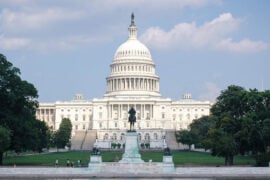In brief
- On 5 March 2021, the UK Financial Conduct Authority (FCA) formally announced the dates of the future cessation or loss of representativeness of all 35 LIBOR settings currently published by ICE Benchmark Administration Limited (IBA).
- This announcement:
- constitutes an index cessation event under the International Swaps and Derivatives Association (ISDA) IBOR fallbacks supplement and the ISDA 2020 IBOR fallbacks protocol for all LIBOR settings
- may trigger contractual requirements in certain LIBOR fallback provisions
- fixes the spread adjustments in the ISDA Fallbacks Supplement and ISDA 2020 IBOR Fallbacks Protocol
In more detail
FCA announcement
In a major development in the LIBOR transition process, on 5 March 2021, the FCA formally announced the dates of the future cessation or loss of representativeness of all 35 LIBOR settings currently published by IBA.
All LIBOR settings will either cease to be provided or no longer be representative:
- immediately after 31 December 2021, in the case of all seven EUR LIBOR settings, all seven CHF LIBOR settings, the Spot Next, one-week, two-month and 12-month JPY LIBOR settings, the overnight, one-week, two-month and 12-month GBP LIBOR settings, and the one-week and two-month USD LIBOR settings
- immediately after 30 June 2023, in the case of the other USD LIBOR settings
The FCA also announced that it would consult on requiring IBA to:
- continue to publish the three remaining GBP LIBOR settings (one-month, three-month and six-month) for a further period after end-2021 on a synthetic basis using the proposed new powers the UK government is proposing to grant the FCA under the proposed Financial Services Bill and the UK Benchmarks Regulation (BMR)
- continue to publish the one-month, three-month and six-month JPY LIBOR settings after end-2021 on a synthetic basis, for one additional year
The FCA also announced that it would continue to consider the case for using such powers to also require the continued publication on a synthetic basis of the one-month, three-month and six-month USD LIBOR settings for some period after 30 June 2023.
Any such synthetic LIBORs would be intended for use primarily to allow legacy LIBOR transactions in these currencies to unwind.
However, with respect to all LIBOR settings that might continue on a synthetic basis, the FCA stated that LIBOR (as currently constituted) will no longer be representative (as of the end-2021 date for the GBP and JPY settings and as of 30 June 2023 for the USD settings) and that representativeness will not be restored.
Also on 5 March, the FCA published statements of policy with respect to some of the proposed new powers that it would be granted under the BMR, pursuant to the Financial Services Bill. Among other things, these statements confirmed the FCA’s intention that the methodology it would propose to use for any LIBOR settings published on a synthetic basis would be a forward-looking term rate version of the relevant risk free rate plus a fixed spread adjustment calculated over the same period and in the same manner as the ISDA spread adjustment. [1]
ISDA index cessation event; potential fallback trigger
ISDA issued a statement that the FCA announcement constituted an index cessation event under the IBOR fallbacks supplement and the ISDA 2020 IBOR fallbacks protocol for all 35 LIBOR settings. [2] Swaps that incorporate the IBOR fallbacks supplement or to which the ISDA 2020 IBOR fallbacks protocol applies will therefore see fallbacks to adjusted risk-free rate plus spread occur from the following dates:
- for swaps that refer to all EUR, GBP, CHF and JPY LIBOR settings, after 31 December 2021
- for swaps that refer to all USD LIBOR settings, after 30 June 2023 [3]
The FCA announcement may also constitute a trigger event for other contractual LIBOR fallback provisions. For example, the announcement constitutes a benchmark transition event under the ARRC’s hardwired fallback language. [4] With respect to “amendment approach” fallbacks, depending on the provision, the announcement may trigger a notice requirement and commence an amendment negotiation.
Under the Loan Market Association’s (LMA) template documentation, the announcement constitutes a “screen rate replacement event” (under a “replacement of screen rate” clause), which typically triggers a lower consent level for making amendments to interest rate provisions. Under the LMA’s rate switch facility agreements, this announcement constitutes a “rate switch trigger event” that requires the agent to send a notice to the other parties. [5]
Parties should check LIBOR fallback provisions in their agreements to determine whether the FCA announcement triggers other obligations, such as obligations to provide notice.
Fixing of ISDA spread adjustments
ISDA’s statement that the FCA announcement constitutes an index cessation event means that 5 March 2021 is the spread adjustment fixing date under the Bloomberg IBOR fallback rate adjustments rule book for all LIBOR currencies and tenors. Bloomberg has now set these spread adjustments. [6]
The setting of these spread adjustments provides economic certainty for the LIBOR transition in that parties know now what the spread adjustments will be when the ISDA fallbacks occur and can plan accordingly.
Please refer to Baker McKenzie’s LIBOR transition hub page for additional information on the LIBOR transition.
[1] Similarly, the US Alternative Reference Rates Committee (ARRC) has previously announced that it would recommend the ISDA spread adjustment for non-consumer cash products.
[2] ISDA also provided guidance of the FCA announcement. Among other things, this guidance stated: “Events may arise in the future which, although not contemplated by the FCA LIBOR Announcement, may affect the timing and application of the relevant fallback rates for each LIBOR setting. These include if a subsequent Index Cessation Event occurs with respect to all LIBOR settings. For example, if the FCA were to make a later announcement that certain LIBOR settings will cease to be provided or become Non-Representative from a different date, the Index Cessation Effective Date for those LIBOR settings would change accordingly.”
[3] Under the ISDA fallback methodology, the rate for the one-week and two-month USD LIBOR settings will be computed by each calculation agent using linear interpolation between end-2021 and 30 June 2023, before falling back to the adjusted risk-free rate plus spread after 30 June 2023.
[4] Under the ARRC hardwired fallback, the actual fallback to the replacement rate will not occur until the benchmark replacement date occurs with respect to the benchmark transition event caused by the FCA announcement. Such benchmark replacement date will not occur until the date on which IBA permanently or indefinitely ceases to provide USD LIBOR.
[5] Similar to the ARRC’s hardwired fallback, the actual fallback to the replacement rate does not occur until the rate switch trigger event date, which is the actual date that LIBOR ceases or becomes unrepresentative.
[6] See here . The Bloomberg IBOR fallback rate adjustments rule book states that “Users should be aware that prior to the Spread Adjustment becoming fixed upon a ‘Spread Adjustment Fixing Date’ . . . neither the Spread Adjustment nor the Fallback Rate should be used as a primary reference rate within a financial instrument or financial contract (or other ‘use’ as defined in the BMR) other than as a contractual fallback. Use of Bloomberg’s calculations to the contrary is expressly prohibited.” This provision had caused a potential issue for some banks in readying their loan agreements for switching to adjusted risk-free rate if the switch were to happen before the spread adjustment fixing date.



